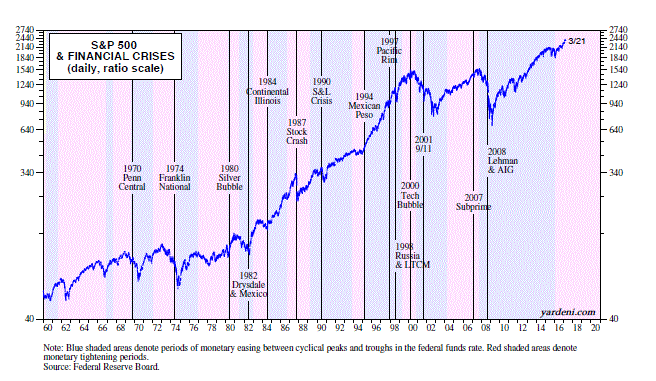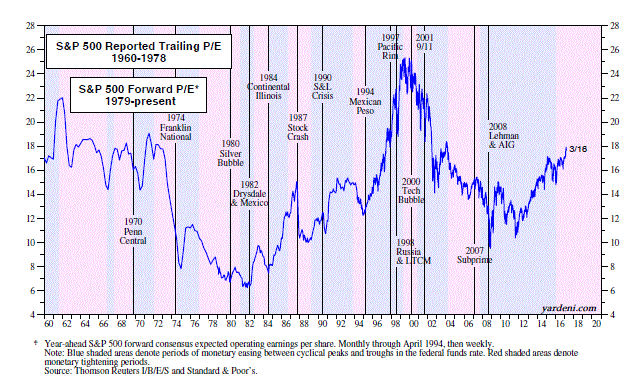There are plenty of old adages about the stock market that focus on the Fed’s impact on the market. They tend to be cautionary and are recited by old timers who’ve lived through some wicked bear markets and fearsome corrections. The basic message is that the Fed is your friend -- until it isn’t. Consider the following:
Zweig
Martin Zweig was a highly respected analyst and investor who passed away in 2013. He famously often said, “Don’t fight the Fed.” He started his newsletter in 1971 and his hedge fund in 1984. On Friday, October 16, 1987 in a memorable appearance on Wall Street Week with Louis Rukeyser, he warned of an imminent stock-market crash. It happened the following Monday and Zweig became an investment rock star. His newsletter, The Zweig Forecast, had a stellar track record, according to Mark Hulbert, who tracks such things.
In his 1986 book Winning on Wall Street, Zweig elaborated on his famous saying: “Monetary conditions exert an enormous influence on stock prices. Indeed, the monetary climate—primarily the trend in interest rates and Federal Reserve policy—is the dominant factor in determining the stock market’s major direction. … Generally, a rising trend in rates is bearish for stocks; a falling trend is bullish.” There are two reasons for this, he wrote: “First, falling interest rates reduce the competition on stocks from other investments, especially short-term instruments such as Treasury bills, certificates of deposit, or money market funds. … Second, when interest rates fall, it costs corporations less to borrow. … As expenses fall, profits rise. … So, as interest rates drop, investors tend to bid prices higher, partly on the expectation of better earnings. The opposite effect occurs when interest rates rise.”
Martin
In 1949, President Harry Truman appointed Scott Paper CEO Thomas McCabe to run the Fed. McCabe pushed to regain the Fed’s power over monetary policy and did so with the Fed-Treasury Accord of 1951. He negotiated the deal with Assistant Treasury Secretary William McChesney Martin. McCabe returned to Scott Paper and Martin took over as chairman of a re-empowered Federal Reserve on April 2, 1951, serving in that position until January 31, 1970 under five presidents. The March 1951 Accord freed the Fed and marked the start of the modern Federal Reserve System. Under Martin, the Fed’s overriding goals became price and macroeconomic stability. He believed that the Fed’s job was to be a party pooper. His famous “punch bowl” metaphor seems to trace back to a speech given on October 19, 1955 in which he said:
In the field of monetary and credit policy, precautionary action to prevent inflationary excesses is bound to have some onerous effects—if it did not it would be ineffective and futile. Those who have the task of making such policy don’t expect you to applaud. The Federal Reserve, as one writer put it, after the recent increase in the discount rate, is in the position of the chaperone who has ordered the punch bowl removed just when the party was really warming up.
Gould
According to the Market Technicians Association, the late technical analysis pioneer Edson Gould, who was active from the 1930s through the 1970s, observed that “whenever the Federal Reserve raises either the federal funds target rate, margin requirements, or reserve requirements three times without a decline, the stock market is likely to suffer a substantial, perhaps serious, setback.” This adage is widely known as “three steps and a stumble.” So far, investors are betting against it since stocks actually rose sharply last Wednesday after the Fed hiked the federal funds rate for the third time since the Great Recession.
What do the data show about the relationship between the Fed’s monetary policy cycle and the S&P 500? Monthly data for the index show that it tends to bottom during the beginning of easing phases of monetary policy, when the Fed is lowering the federal funds rate. It tends to continue rising through the end of the easing phases and even when the Fed starts raising interest rates. Three rate hikes may cause occasional stumbles, but it’s hard to see them in the data.
What does stand out is that the tightening phase of monetary policy often ends in tears because it tends to trigger financial crises. Forward P/Es have a tendency to peak before the crises hit as investors begin to fret that higher interest rates may be starting to stress the economy.


